Post Election: What’s next for the Affordable Care Act?
The United States healthcare system has reached a pivotal moment following President Obama staking much of his first term on passing the Affordable Care Act and President-elect Trump running on a campaign promising to “Repeal and Replace” it on his first day in office.

Barrack Obama and Donald Trump discussing the Affordable Care Act and future of Obamacare
This article was published in the Dallas Morning News on 11/14/16 and meant to be a bipartisan analysis of the options: http://www.dallasnews.com/opinion/commentary/2016/11/14/post-election-next-obamacare
Obamacare lingered in the background as a campaign issue until late October, when the 2017 insurance premiums were released with double-digit premium increases. Healthcare then became a top campaign issue as Trump doubled down on his position to repeal.
Following his White House meeting with President Obama, President-elect Trump now shows a willingness to compromise and leave intact ACA components, including two key provisions. Specifically, allowing parents to keep children on their policies until age 26 and not allowing refusal of coverage by insurers for pre-existing conditions.
I just returned from the Harvard Business School Alumni/YPO Presidents annual healthcare conference and a primary conversation topic was: What will happen next?
Here are some of the political details covering President Trump’s options and their likelihoods:
Is Replace and Repeal Possible?
Repealing the Affordable Care Act, or Obamacare, would require 60 senate votes. After losing two, there are only 52 Republican senators, so a repeal would require a significant degree of bipartisan support. There is also a Reconciliation Fast-Track process allowing amendments to specific parts that impact the budget. This process only requires a majority vote, which the Republicans have.
Donald Trump has always stated he was in favor of universal insurance coverage while House Speaker Paul Ryan and the Republicans have been for privatizing Medicare and supports open insurance markets, and he’s against Medicare/Medicaid expansion.
The general consensus was that the GOP Replacement Plan would most likely include the following key planks:
· Expansion of Health Savings Accounts (HSA)
· Elimination of the individual mandate penalizing non-coverage
· Open insurance purchasing across state lines
· Amend the guarantee of coverage for pre-existing issues to continuous coverage
· Create lower catastrophic premium options
· State flexibility to shape insurance markets
· State Medicaid reform
· Standard tax credit with flexibility to use across commercial market
· Limit Medicare growth through per capita caps
· Strengthen Medicare Advantage
· Repeal IPAB (Independent Payment Advisory Board)
· Possibly repeal CMMI (Centers for Medicare and Medicaid Innovation) that drives innovative payment and quality models like Accountable Care Organizations
· Continue promoting value based Medicare FFS migration through MACRA (Medicare Access and CHIP Reauthorization Act )
More power will return to the states with support from 33 GOP Governors. One important difference in the news this week was on the guarantee for pre-existing coverage. Many Republicans support replacing it with a guarantee for continuous coverage for pre-existing issues. Their rationale is this new guarantee will keep people from gaming the system by not paying premiums until he or she has an issue.
The financial markets saw sharp increases in pharmaceutical stocks this week that had been troubled during the election. Hillary Clinton proposed measures to control pharmaceutical costs, including fines on drug manufacturers imposing unjustified price hikes and capping drug prices. Trump’s election website announced two initiatives to “Advance research and development in healthcare,” and more pointedly, “Reform the Food and Drug Administration, to put greater focus on the need of patients for new and innovative medical products.” This is being seen as a very positive sign for Biotech companies.
Hospital Operators, including HCA and Tenet, saw stock declines last week because of fears that a repeal would leave them caring for more uninsured patients after benefiting from the 20 million new insured members from the ACA. Publicly held managed care groups like Centene and Molina Health also saw losses due to anticipation for scaling back Medicaid coverage.
At Hormone Therapeutics, we have built a national telemedicine platform providing access to physicians specializing in many of the chronic care conditions associated with aging previously unavailable in most areas of the country. We hope that President-elect Trump supports the recent advances in digital health providing increased access, improved care and lower costs by keeping patients out of hospitals that do not need to be there.
Affordable Care Act voter frustration centered on premium increases that occurred again right before the election. The price increases were due to actuarial issues from an increase of older, unhealthy members without enough young, healthy ones signing up. While this reflects very significant problems in the insurance marketplace, the entire ACA was presented as a failed platform because of this. Throwing 20 million newly insured off of their health plans would be political suicide in the next election for Republican Senators and Governors. No one has a real health reform plan that expands coverage while lowering costs.
What’s Next for the Affordable Care Act?
The biggest questions start with understanding what battles soon-to-be President Trump chooses, and whether he’ll agree to reach across the aisle and work with fellow deal maker Minority Leader Charles Schumer. Will he keep his campaign promise to try and repeal and replace it with something terrific or seek to amend certain parts? Does he intend to undo all of the monumental work that went into providing coverage to 20M additional uninsured and creating the Baylor Scott & White Affordable Care Organization and others just like it across the country? Does he want to remove the pre-existing guarantee, individual mandate and subsidies to go back to 2008?
Hopefully, everyone can work together to continue to improve the progress being made to make America’s healthcare system great by working to improve the quality of care, expand coverage, reduce readmissions, align the providers, insurers and patients all while reducing costs. This is an extremely complex undertaking and can only be accomplished collaboratively and over time.
Hunter Howard, President of Hormone Therapeutics, spent the past week at the Harvard Business School Alumni/YPO Presidents annual Healthcare conference discussing these issues with healthcare business leaders from around the globe. He has founded and led three Health/IT Companies: Hormone Therapeutics, MediGain and Ocracoke Health Consultants
#Affordablecareact #ACA #Obamacare #HBShealth #startuphealth #repealandreplace #dallasnews @adampitluk #HSA #preexisting #biotech #telemedicine
Post Election: What’s next for the Affordable Care Act?
Saleamp Design November 21st, 2016
Posted In: Uncategorized
How to Avoid Testosterone Harming Chemicals and Endocrine Disruptors
Endocrinologists are warning every one of the effects of exposure to every day household chemicals and these chemicals have been coined “endocrine disruptors”. The endocrine disruptors interfere with our body’s endocrine system, and hormones, and can cause weight gain and learning disabilities.
Xenoestrogen is one of those notorious endocrine disruptors that imitates estrogen when in contact with the human body. If men are exposed to excessive amounts of this estrogen-imitating chemical, it will drop his testosterone levels. Once we realized how bad Xenoestrogen was for the body we then looked around and saw it everywhere!! Xenoestrogen is found is plastics, shampoos, gasoline, cows and toothpaste.
Xenoestrogen is one of those ubiquitous chemicals in today’s manufacturing society that some endocrinologists believe it is the reason that testosterone levels are lower in today than ever before. This is also the believed reason that twice as many boys are being born with Hypospadias than in the past. Hypospadias is a birth defect where the urethra opening is on the underside of the penis and not at the tip. This is why it is so important for expecting Moms to stay away from xenoestrogens during the pregnancy.

Avoiding Endocrine Disruptors
Here are the best ways to avoid Xenoestrogens and other endocrine disruptors:
 Store food in glassware
Store food in glassware
Never, ever, eat heated food in plastic containers. Most modern plastics contain phthalates. Phthalates give plastic flexibility, durability, and longevity. Phthalates, another endocrine disruptor, also confuse your endocrine system by imitating estrogen.
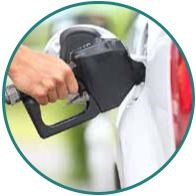 Avoid exposure to pesticides and gasoline
Avoid exposure to pesticides and gasoline
Limit your exposure to these products that contain endocrine disruptors. Wash your hands thoroughly if you do come into contact with gasoline and pesticides or other endocrine disruptors.
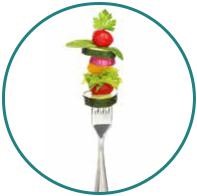 Avoid BPA
Avoid BPA
BPA is a chemical that lines food cans and thermal printer paper and studies have shown that it reduces testosterone.
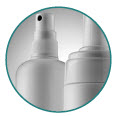 Eat organic
Eat organic
Pesticides and hormones often imitate estrogens in our body. When possible, eat organic that avoids these chemicals. Always wash your fruits and vegetables before eating them and use meat and milk from cows untreated with hormones.
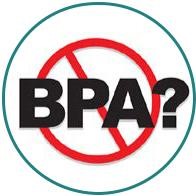 Use natural grooming products
Use natural grooming products
Many (75%) of these products contain parabens, which are another type of endocrine disruptors. Here is a list of some of the natural, paraben-free grooming products available at Whole Foods and most health food stores:
- Jason Shampoo
- Grandpa’s Pine Tar Soap
- Tom’s of Maine Toothpaste
- Crystal Rock Deodorant
Hormone Therapeutics aims to help people looking to improve and optimize their health through natural means or through the guidance of our physicians.
Don’t miss out our free weekly tips and news on Low T, hormone balancing, healthy living, nutrition and a lot more.
Want more?
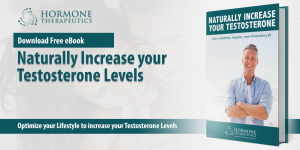
Sign up today and Get our ebook, ‘Naturally Increase Your Testosterone Levels’ absolutely FREE.
How to Avoid Testosterone Harming Chemicals and Endocrine Disruptors
Saleamp Design November 18th, 2016
Posted In: Health & Wellness
Tags: BPA, endocrine disruptors, gasoline, glassware. Pesticides, organic, testosterone, Testosterone replacement therapy, xenoestrogens
How does Testosterone Affect Sexual Health?
Can testosterone improve sexual health?
Many factors fuel the sexual health of men as well as their sexual performance, ability to perform and changes in their ability to function as they once could. Low testosterone plays a significant factor in all of these and treating Low T can improve interest in sex, sexual function and sexual performance.
The Effects of Low T on Sexual Health
While we do understand that testosterone production comes from a healthy HPA Axis, or communication between your Hypothalamus, Pituitary Glands, Adrenals and Testicles, science still does not understand exactly how testosterone improves sexual health or performance. As you probably noticed in High School, College or amongst your friends, there is no normal level of sexual interest amongst men or women.
Like your testosterone levels, it peaks around 19 and usually slowly declines for the rest of your life. Each person takes a different path, however, and declining sexual interest is typically tied to declining testosterone levels. These levels can follow a steady decline, or can be accelerated by health issues, stress, poor sleep and even by keeping sexually active. Many men can lose sexual interest at normal testosterone levels or maintain sexual health even at low testosterone levels but as testosterone levels get depleted it will universally effect sexual interest and performance.
One study of Men in the NE of the US showed 11% of men had a lack of sex drive. The researchers also found 28% of men with low testosterone levels had a low libido which means that men with low testosterone levels were 256% more likely to have low sex drive or low libido. The average age of the study participants was 47.
Low Testosterone and Erectile Dysfunction
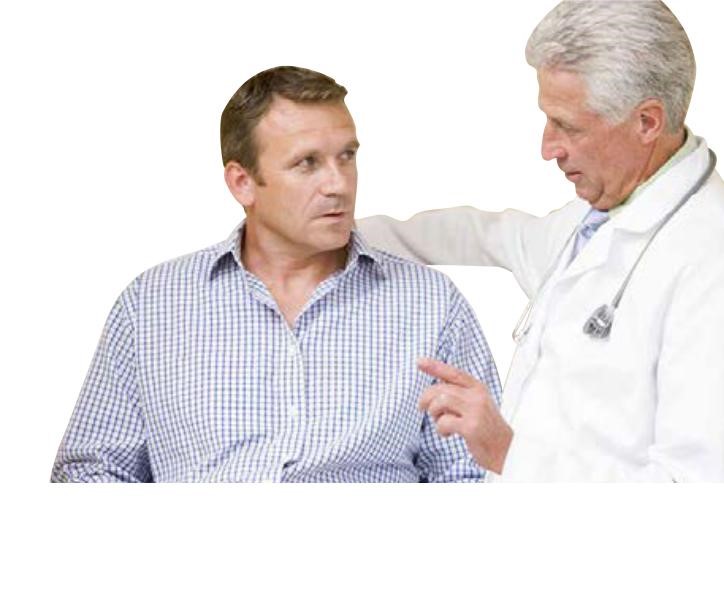
Erectile Dysfunction, or ED, can be caused by many health problems including low testosterone, atherosclerosis (hardening of the arteries), diabetes, high blood pressure and high cholesterol. Those last three items all cause hardening of the arteries. If they are damaged, the penis has difficulty dilating and bringing sufficient blood flow required for an erection. Testosterone therapy can lead to increased libido and interaction and connection between the brain and penis.
Viagra is an example of an oral PDE5 inhibitors that encourage an increase in nitric oxide which dilates the blood vessels and encourages more blood flow to the penis. Three potent selective PDE5 inhibitors (sildenafil (Viagra; Pfizer), tadalafil (Cialis; Lilly), and vardenafil (Levitra; Bayer)) are currently available. Testosterone therapy will often increase the libido and sexual function to erase Erectile Dysfunction, but often our physicians will prescribe a combination with PDE5 inhibitors as well.
Studies are showing that men with classic hypogonadism, or low testosterone, have a reduced response to PDE5 inhibitors and see a significant response improvement with Testosterone Therapy. For patients who fail to see ED improvement following TRT and PDE5 inhibitors we can prescribe and test the direct injectable Trimix.
The Connection of Testosterone Levels and Sexual Health
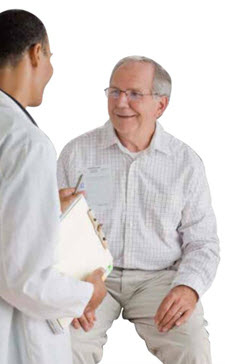 While this sounds like a juvenile sex joke, we are now seeing that lowered testosterone levels lead to a decreased sex life, but that a decreased sex life also can lower ones testosterone levels in a study at the University of Sydney in Australia.
While this sounds like a juvenile sex joke, we are now seeing that lowered testosterone levels lead to a decreased sex life, but that a decreased sex life also can lower ones testosterone levels in a study at the University of Sydney in Australia.
Researchers followed 1,700 men over the age of 70. The study asked questions and measured a number of things. The study tracked the ability to keep and maintain an erection. It measured the frequency that sexual activity led to ejaculation (through masturbation or sexual intercourse). The study also tracked libido and sexual health versus earlier times in their lives.
During the study, all of the men had blood tests regularly taken and the following tests measured: Total Testosterone, Free Testosterone, Estrogen, SHGB and some other hormones.
Researchers discovered a 10% reduction in testosterone levels led to a noticeable decrease in sexual activity but no change in the number of erections. Another study showed that testosterone levels increased on night after sexual activity without any increase on nights where there was no sexual activity. Physicians are concerned that a lack of sexual activity can accelerate low testosterone.
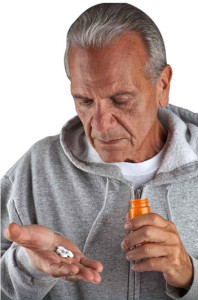 A further study showed that men taking Cialis had higher testosterone levels than men taking Viagra. Both drugs are PDE5 inhibitors to boost nitric oxide and blood flow to the penis. Cialis, however, last 36 hours for most people rather than 6-8 hours. Cialis users typically have more intercourse over this extended time period.
A further study showed that men taking Cialis had higher testosterone levels than men taking Viagra. Both drugs are PDE5 inhibitors to boost nitric oxide and blood flow to the penis. Cialis, however, last 36 hours for most people rather than 6-8 hours. Cialis users typically have more intercourse over this extended time period.
The researchers concluded that “as it is unlikely that the two drugs have a different direct effect on the pituitary-testis axis, this effect is probably due to the higher frequency of full sexual intercourse.”
A Chinese study observed a group of men that abstained from ejaculation for one week and had their testosterone levels tested each day. Research showed that abstaining for 6 days had no effect on testosterone levels, however, on the seventh day the testosterone levels surged to 145.7% of the baseline then plummeted on the 8th day.
The researchers believe the testosterone surge was the result of a negative feedback suppression of Luteinizing hormone (LH secretion) which is essential for testosterone production.
Hormone Therapeutics aims to help people looking to improve and optimize their health through natural means or through the guidance of our physicians.
Don’t miss out our free weekly tips and news on Low T, hormone balancing, healthy living, nutrition and a lot more.
Want more?

Sign up today and Get our ebook, ‘Naturally Increase Your Testosterone Levels’ absolutely FREE.
How does Testosterone Affect Sexual Health?
Saleamp Design November 15th, 2016
Posted In: Low T Info
Tags: atherosclerosis, Bayer, blood flow, boner, Cialis, diabetes, dilates, ED, erectile dysfunction, erection, high blood pressure, high cholesterol, hypogonadism, inhibitors, intercourse, Levitra, LH, LH secretion, libido, Lilly, Lutenizing hormone, nitric oxide, PDE5, PDE5 inhibitors, penis, Pfizer, pituitary, sex drive, sexual health, sexual performance, sildenafil, tadalafil, testes, testicles, testosterone level, testosterone therapy, trimix, TRT, vardenafil, Viagra
Effective Testosterone Boosting Exercise to Increase T Levels
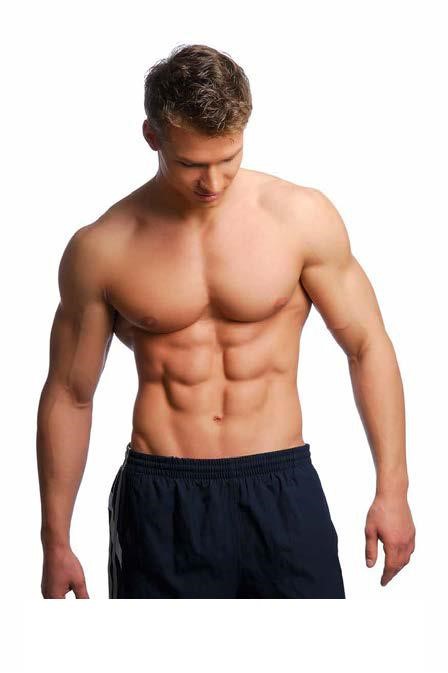
Testosterone boosting exercise can cause our body to produce more testosterone and by increasing muscle mass and decreasing body fat. Since adipose tissue converts testosterone into estrogen the more fat we drop through exercise increases our testosterone levels.
Testosterone Boosting Exercise #1: Lift Weights
One safe and effective testosterone boosting exercise is lifting weights. Rotating through the gym for a quick circuit on the weight machines is not enough. Here is the advice one expert gives on developing the proper weight lifting routine to really boost your testosterone levels:
 Use compound lifts
Use compound lifts
Focus on squats, bench press, deadlift, and shoulder press as your main lifts. Definitely focus on exercises that work the large muscle groups. The more work you put into the larger muscle groups the better the return you will see on increased testosterone levels.
 High volume
High volume
Workout volume is determined by the following formula: sets x reps x weight. Studies have shown that focusing on high volume workouts results in greater testosterone increases.
 Don’t take sets to failure
Don’t take sets to failure
There is nothing wrong with going for it on your last set but don’t do it for all your sets.

Rest
Give yourself a minute to two minutes between each set.
Testosterone Boosting Exercise #2: High-Intensity Interval Training (HIIT) Training
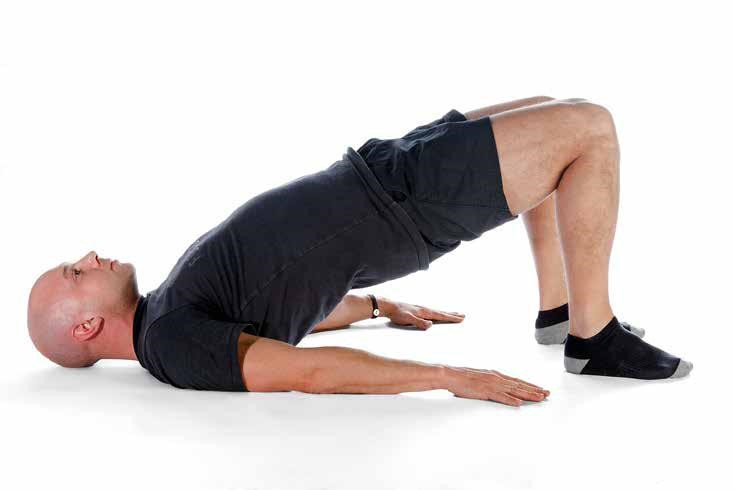 Another effective testosterone boosting exercise is HIIT Training. Studies have shown that HIIT workouts boost testosterone levels by similarly pushing your physical limits. HIIT stands for High-Intensity Interval Training and calls for short, intense bursts. Your program typically alternates bursts of energy and less-intense recovery period followed by a less-intense cycle several times throughout a workout. HIIT also improves athletic conditioning and fat metabolism, while increasing muscle strength.
Another effective testosterone boosting exercise is HIIT Training. Studies have shown that HIIT workouts boost testosterone levels by similarly pushing your physical limits. HIIT stands for High-Intensity Interval Training and calls for short, intense bursts. Your program typically alternates bursts of energy and less-intense recovery period followed by a less-intense cycle several times throughout a workout. HIIT also improves athletic conditioning and fat metabolism, while increasing muscle strength.
There are many online HIIT workouts. One example of an HIIT program is this simple wind sprint routine:
- Sprint 40 yards as fast as possible
- Walk back slowly
- Sprint again
- Work up to 40 sets of 40 yard sprints
Don’t over train!
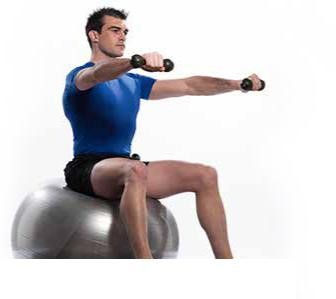 Over exercising and doing extreme endurance tests like marathons and triathlons actually sabotages testosterone production. Studies have shown that overtraining can reduce testosterone levels significantly. While exercising hard is important, giving your body rest to recuperate from the damage is just as critical.
Over exercising and doing extreme endurance tests like marathons and triathlons actually sabotages testosterone production. Studies have shown that overtraining can reduce testosterone levels significantly. While exercising hard is important, giving your body rest to recuperate from the damage is just as critical.
Give yourself at least two days of rest per week. Move more. Try and keep moving and being active each day. Keep the blood flowing and muscles working. If you have a desk job, take frequent breaks. Take walks every 30 minutes. Schedule walking meetings. Take the stairs. Walk or bike to work if possible. Make these testosterone boosting exercise routines and just keep moving!
Hormone Therapeutics aims to help people looking to improve and optimize their health through natural means or through the guidance of our physicians.
Don’t miss out our free weekly tips and news on Low T, hormone balancing, healthy living, nutrition and a lot more.
Want more?

Sign up today and Get our ebook, ‘Naturally Increase Your Testosterone Levels’ absolutely FREE.
Effective Testosterone Boosting Exercise to Increase T Levels
Saleamp Design November 11th, 2016
Posted In: Testosterone Therapy
Tags: bike, build, bulk, exercise, HIIT, intensity interval, lift, muscle, testosterone, testosterone boosting exercise, testosterone levels, training, walk, weight
Enhance Your T Levels with this Testosterone Boosting Diet
 A Sample of Testosterone Boosting Diet
A Sample of Testosterone Boosting Diet
Diet plays a huge role in testosterone production. Our organs and glands need specific minerals like zinc and magnesium for the initiation of testosterone production. The Leydig cells require cholesterol to fuel the production of testosterone. Adding testosterone boosting foods like broccoli, cauliflower, and cabbage will also assist in one’s testosterone levels as well as Testosterone : Estrogen ratio by flushing estrogens from the body that lower our testosterone levels.
Increasing fat and cholesterol in-take also helps boost testosterone production. That’s the origin of the Rocky training on raw eggs myth. Loading up on bacon, eggs, nuts and steak certainly has its detractors as does increasing cholesterol consumption but this is all about testosterone boosting diet.
Here’s an example of one man’s journey to boost his testosterone through his own “testosterone boosting diet” that saw a dramatic increase by testosterone optimizing his diet, exercise and sleep (this is not what we are recommending but an example):
Testosterone Boosting Diet Sample Meal Plan
Breakfast: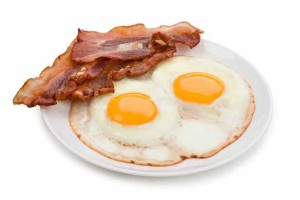
Bacon and Eggs . . and more bacon . . and more eggs
Weekdays: Three slices of bacon and three whole eggs. This provided the fats and cholesterol the body needs to make testosterone. Beware nitrates if you eat this much bacon and consider nitrate-free bacon.
Weekends: Mexican Breakfast burritos or pancakes.
Lunch:
The Man Salad
A properly prepared Man Salad packs as many Testosterone boosting foods as he could find:
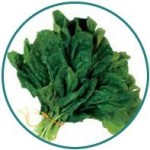 Spinach/Spring Salad Mix
Spinach/Spring Salad Mix
The salad base using organic greens. Spinach and other leafy green vegetables contain minerals like magnesium and zinc, which have been shown to aid in testosterone production
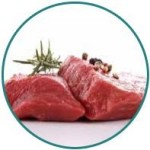 Meat
Meat
Beef provides our bodies with the protein needed to create muscle and the fats and cholesterol to make testosterone. His philosophy was the fattier, the better.
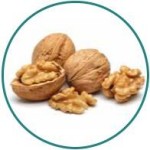 Nuts
Nuts
A handful of almonds, Brazil nuts or walnuts. Nuts are fat bombs providing cholesterol for the Leydig cells need for T production.
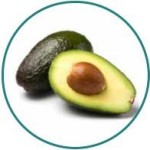 Avocado/Olives
Avocado/Olives
Avocados and olives provide the good fats needed for healthy testosterone production.
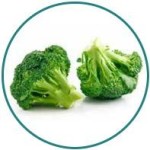 Broccoli
Broccoli
Broccoli contains high levels of indoles. This compound reduces bad estrogen that hurt testosterone levels.
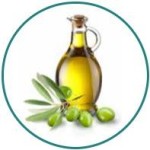 Olive Oil
Olive Oil
Olive oil helps Leydig cells (which produce testosterone) absorb cholesterol better which assists in testosterone production. More cholesterol absorption = more testosterone.
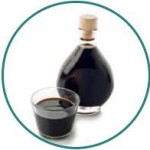 Balsamic Vinegar
Balsamic Vinegar
Mostly for taste and to help keep your insulin in check.
Testosterone Boosting Diet: Snacks
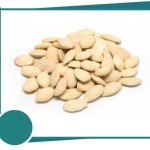
During the day he snacked on testosterone-healthy foods like nuts, pumpkin seeds, and broccoli and occasionally dark chocolate.
An added testosterone benefit to a high fat diet with balanced protein and carbs is can help shed some body fat (this man went from 18% to 12% body fat). Studies show that high fat diets actually contribute to increased body fat loss. And as we discussed earlier, as you lose body fat, your T production ramps up. Remember that this is not a long term solution but one man’s 90 day example.
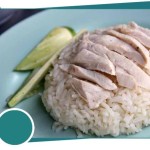 Dinner
Dinner
Whatever (in moderation)
He ate what the family was having: chili, chicken and rice, enchiladas, etc. He was not overly worried about carbs but watched his portions.
Results
This man doubled his Total Testosterone levels over 120 days but was doing so many healthy things in addition to the testosterone boosting diet. The diet was not unconventional with the exception of the fat and cholesterol intake. He didn’t follow a strict low-carb or Paleo diet. Research is showing that high protein, low carb diets can decrease testosterone levels.
Cholesterol Levels from this approach
His full lipid screening showed the following 90 days on the testosterone boosting diet:
Total Cholesterol: 202 mg/dL (Optimal range: < 200 mg/dL.)
HDL Cholesterol (“Good” Cholesterol): 77 mg/dL (Optimal range: > 60 mg/dL)
LDL Cholesterol (“Bad” Cholesterol): 112 mg/dL (Optimal range: 100-129 mg/dL.)
Triglycerides: 65 mg/dL (< 150 mg/dL is considered normal; < 100 mg/dL is optimal)
By the raw numbers, his overall lipid screening was good despite the high total cholesterol. His results were more interesting when examining the ratios doctors look at for heart disease risk.
Total cholesterol/HDL Ratio: 2.6:1 (Normal < 5:1; Optimal < 3.5:1)
LDL/HDL Ratio: .68:1 (Normal > .3:1; Optimal .4:1.)
Triglycerides/HDL Ratio:
.84:1 (Optimal < 2:1)
Despite gorging on bacon, eggs, whole milk, and steak for four months, he still had healthy cholesterol levels.
Hormone Therapeutics aims to help people looking to improve and optimize their health through natural means or through the guidance of our physicians.
Don’t miss out our free weekly tips and news on Low T, hormone balancing, healthy living, nutrition and a lot more.
Want more?

Sign up today and Get our ebook, ‘Naturally Increase Your Testosterone Levels’ absolutely FREE.
Enhance Your T Levels with this Testosterone Boosting Diet
Saleamp Design November 8th, 2016
Posted In: Testosterone Therapy
Tags: avocado, bacon, beef, broccoli, caveman, cholesterol, diet, eggs, estradiol, HDL, LDL, Leydig cells, Lipid, low carb, nuts, olives, paleo, protein, ratio, spinach, steak, testosterone boosting diet, testosterone diet, testosterone level, triglycerides, whole milk
Here’s What You Should Know about Testosterone Production
 Testosterone is important as it maintains our physical strength, our focus, and our mood, but do you an idea about testosterone production? How is it made?
Testosterone is important as it maintains our physical strength, our focus, and our mood, but do you an idea about testosterone production? How is it made?
It’s not just an academic question. An understanding of how our bodies produce testosterone leads to an understanding of what might cause our bodies to stop producing enough of the stuff, and understanding a problem is the first step to solving it.
Testosterone Production 101 – The Three Types of Testosterone
In essence, testosterone is a steroid hormone. The changes and benefits it triggers in the body are detailed right over here. The average male human creates 7mg of testosterone per day, but there are actually three different types. Not all of it is usable by the body, or at least not to produce the effects you’re probably looking for.
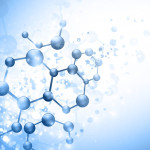 Free Testosterone
Free Testosterone
Free testosterone is so named because it has no attached proteins. It’s free to float through the bloodstream, and isn’t bonded to any other molecules. Free testosterone is the type of testosterone that has all those great physical and mental benefits, because it’s able to roam our bodies and activate receptors in various cells. Even though this is the kind of testosterone we think of as the most beneficial, it has the smallest concentration of the three. It only comprises about 2%-3% of our total testosterone levels. Everything we do for testosterone production is really meant to increase free testosterone, but the best way to do that is to raise our overall levels.
 SHBG-Bound Testosterone
SHBG-Bound Testosterone
This type of the male hormone makes up about 40%-50% of our total testosterone levels. It’s bound to SHBG (sex hormone-binding-globulin), which is a protein produced in the liver. It regulates the amount of free testosterone in the body. SHBG-Bound Testosterone is what’s known as “biologically inactive”, meaning it doesn’t actually have any other effect in our bodies beyond helping regulate our total levels. This type of T doesn’t have harmful effects either, but it is why a man might test with adequately high testosterone levels but still experience the symptoms of testosterone deficiency.
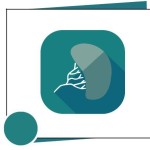 Albumin-Bound Testosterone
Albumin-Bound Testosterone
This makes up the remainder of our total testosterone. It’s bound to the protein albumin, which is also produced in the liver. Its function is to stabilize fluid volumes between our cells. Albumin-Bound Testosterone is also biologically inactive, but unlike the SHBG-Bound variety, its bond can be broken. That converts it back into free testosterone, making the stuff sort of testosterone reserve supply.
About 95% of our testosterone is produced in the testicles. The rest is made in our adrenal glands, which is why the hormone is present in women as well. For men, though, it’s almost entirely the testicles.
It’s a pretty complex process that results in the male hormone. Learn about testosterone production in this basic rundown:
 The hypothalamus (part of the brain) secretes gonadotropin-releasing hormone. This stuff loops around to the back of the brain and hits the pituitary gland.
The hypothalamus (part of the brain) secretes gonadotropin-releasing hormone. This stuff loops around to the back of the brain and hits the pituitary gland.
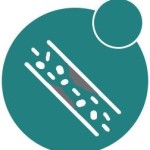 The pituitary gland receives the gonadotropin-releasing hormone, and responds by producing two more hormones. Follicle-stimulating hormone (FSH) and luteinizing hormone (LH). Both of these natural chemicals enter the bloodstream and make their way to the testicles.
The pituitary gland receives the gonadotropin-releasing hormone, and responds by producing two more hormones. Follicle-stimulating hormone (FSH) and luteinizing hormone (LH). Both of these natural chemicals enter the bloodstream and make their way to the testicles.
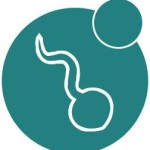 Once they’ve arrived down there, the FSH and LH do two different things. FSH initiates sperm production (important!), while LH kicks off testosterone production (just as important!)
Once they’ve arrived down there, the FSH and LH do two different things. FSH initiates sperm production (important!), while LH kicks off testosterone production (just as important!)
 The actual cells that create the testosterone are called Leydig cells. They work by converting cholesterol into testosterone. That cholesterol literally comes from the bloodstream, which is why a healthy level of T can actually improve your heart health. It’s also the reason eating eggs is so beneficial to testosterone levels!
The actual cells that create the testosterone are called Leydig cells. They work by converting cholesterol into testosterone. That cholesterol literally comes from the bloodstream, which is why a healthy level of T can actually improve your heart health. It’s also the reason eating eggs is so beneficial to testosterone levels!
 During testosterone production, it’s released by the testicles into the bloodstream. Most of the stuff attaches to SHBG and albumin, nullifying its effects. It’s the small amount that remains free that aids our strength, focus, sexual drive, and all the other great benefits of testosterone.
During testosterone production, it’s released by the testicles into the bloodstream. Most of the stuff attaches to SHBG and albumin, nullifying its effects. It’s the small amount that remains free that aids our strength, focus, sexual drive, and all the other great benefits of testosterone.
Here’s a handy chart of the HPA-axis:
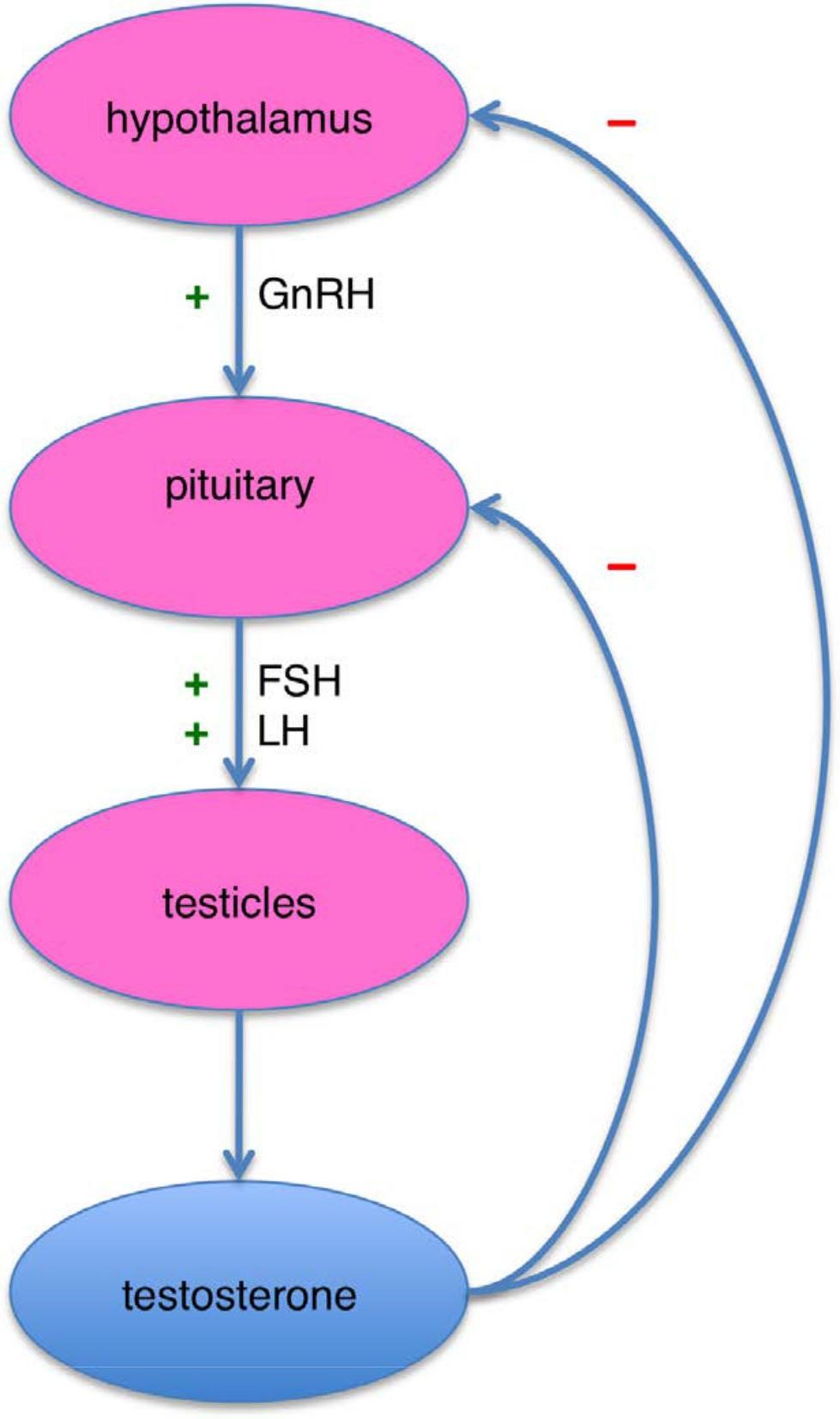
Image source: Wikipedia
In essence, testosterone is a steroid hormone. The changes and benefits it triggers in the body are detailed right over here. The average male human creates 7mg of testosterone per day, but there are actually three different types. Not all of it is usable by the body, or at least not to produce the effects you’re probably looking for.
Hormone Therapeutics aims to help people looking to improve and optimize their health through natural means or through the guidance of our physicians.
Don’t miss out our free weekly tips and news on Low T, hormone balancing, healthy living, nutrition and a lot more.
Want more?

Sign up today and Get our ebook, ‘Naturally Increase Your Testosterone Levels’ absolutely FREE.
Here’s What You Should Know about Testosterone Production
Saleamp Design November 4th, 2016
Posted In: Low T Info
Tags: albumin, biologically available, Follicle Stimulating Hormone, free testosterone, FSH, GnRH, growth hormone, HPA axis, hypothalamus, LH, low t, Luteinizing Hormone, pituitary, sex hormone-binding-globulin, SHBG, testicles, testosterone, testosterone levels, testosterone production
Here’s What You Should Know More about Testosterone Levels
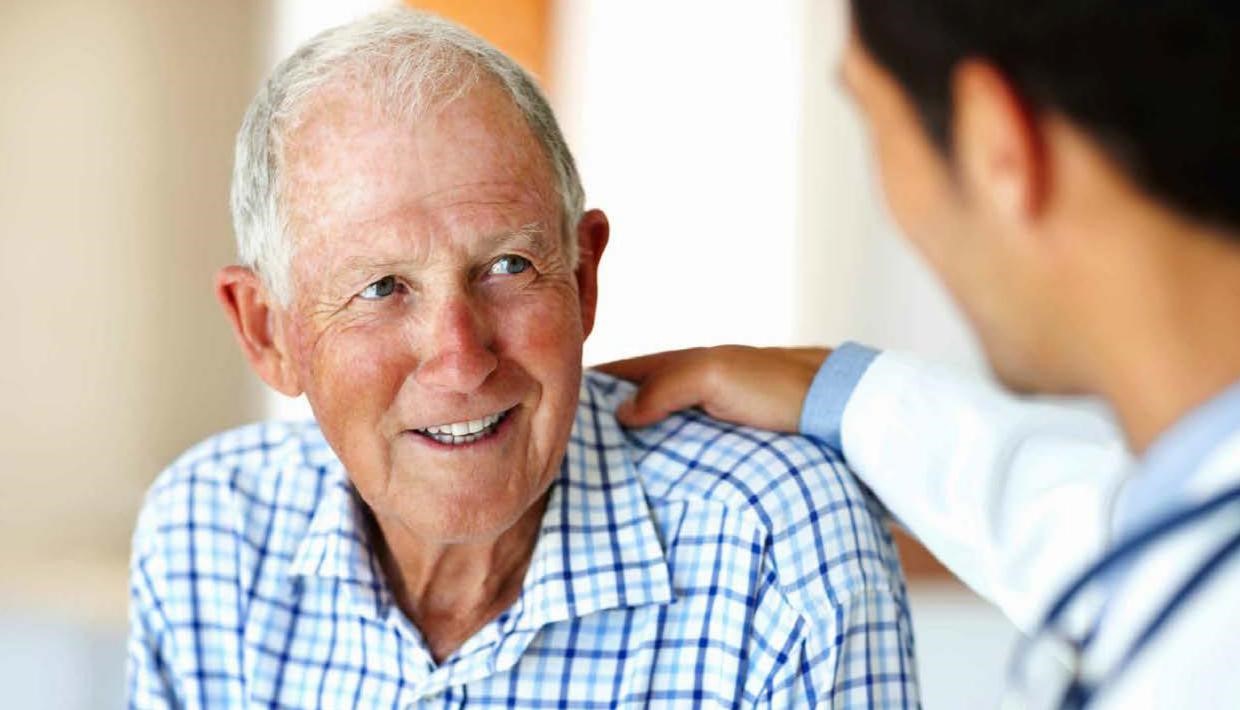 How Do I know my Testosterone levels?
How Do I know my Testosterone levels?
With all this information on testosterone and the benefits of maintaining proper testosterone levels, you might be wondering about the specific testosterone levels you have seen. What is a normal testosterone levels? How much testosterone are you supposed to have, and how do you find out your current level? Well, it’s a tricky question. Part of the problem is that despite years of efforts and calls for action, hormone testing is still not universally standardized.
There has been positive movement towards a standard set of testing, but we’re not there yet. The other issue is that many doctors don’t agree on just how much testosterone a person, male or female, should have in their bodies. There is a rough “normal range”, but some doctors seem to play a little fast and loose with the low and high ends of the range.
Many doctors and labs don’t take into account factors like age and physical condition, and it means that you might have to do some research on your own or see a specialist to really understand your testosterone situation.
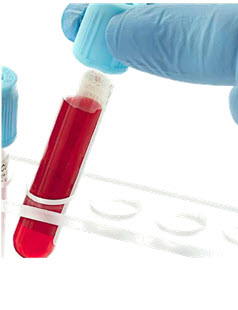 Flaws in the Accepted Blood Testing System
Flaws in the Accepted Blood Testing System
LabCorp uses a Total Testosterone range of 348 – 1197 ng/dl (nanograms per deciliter). According to this reference range, one man with a 355 ng/dl would be considered normal while his neighbor at 345 ng/dl would be considered to have low testosterone and if they were lucky their health insurance would cover Testosterone Replacement Therapy. Also, a neighbour across the street might have a Total Testosterone level of 1150 ng/dl and he would also be considered normal like the man with a 355 ng/dl. Only a few years ago LabCorp and the insurance companies considered 249 the lower end of normal rather than 348.
The biggest problem comes when age is not factored into the analysis and 355 ng/dl is considered normal whether the patient was 20, 40, 60 or 80?! It also does not matter if the patient was obese, super fit, thin, had a pituitary gland issue or exhibited any of the symptoms of low testosterone?!?!
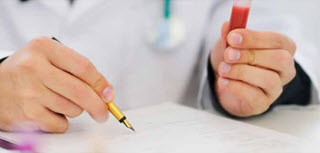 This is why having an excellent medical team to assess your blood tests, physical and medical history is critical. We rarely know what our baseline was from age 19 and everyone has their own sweet spot across Testosterone and all of the other hormones.
This is why having an excellent medical team to assess your blood tests, physical and medical history is critical. We rarely know what our baseline was from age 19 and everyone has their own sweet spot across Testosterone and all of the other hormones.
The fact that reference ranges don’t break patients down by age or health status explains why a 30-year-old man can go to his doctor with all of the symptoms of low T, only to be told that his T levels are fine because they’re within the “normal” range. If you’re 30 (or even 50), but have the same testosterone level as an 80-year-old, diabetic man, your doc may say you’re okay, but you’re still not going to feel good. Plain and simple.
Contact Hormone Therapeutics to get blood tested and a Physician evaluation of your results and treatment options!
Reference Ranges for Testosterone Levels in Men
So, in the interests helping you with of self-directed research, here are average testosterone levels for men up to age 54. The figure to pay attention to here is “Mean Total Test”, which is the average level for men of that age. This data is taken from a 1996 study involving hundreds of participants.
If you have your testosterone levels tested and your levels are approximately at the mean level for your age, then you probably don’t suffer from low testosterone.
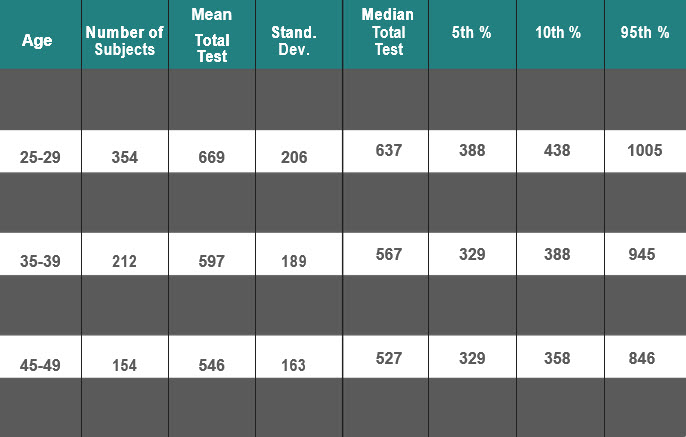
Optimal Testosterone Levels
 Of course, just because you’re not suffering from medically low testosterone doesn’t mean you wouldn’t benefit from more. Those numbers are the average levels only, not the best levels. Research hasn’t determined a hard and fast rule for the optimal levels of testosterone. Some men are fine at the low end of the normal range, while others need to be at the very top to feel their best. What’s normal and what’s optimal?
Of course, just because you’re not suffering from medically low testosterone doesn’t mean you wouldn’t benefit from more. Those numbers are the average levels only, not the best levels. Research hasn’t determined a hard and fast rule for the optimal levels of testosterone. Some men are fine at the low end of the normal range, while others need to be at the very top to feel their best. What’s normal and what’s optimal?
Anecdotal evidence shows that many men start to feel the effects of low testosterone at the 500 ng/dl mark. Although this shouldn’t be taken as gospel, it does seem that staying above 500 ng/dl is a good idea for most men.
Overly high levels of testosterone typically aren’t something people need to worry about. Although there are detrimental effects to having too much testosterone, such as thick blood and sleep apnea, excess testosterone isn’t a common condition. To be sure, it’s highly unlikely that anyone would reach those levels by following the natural and food-based advice listed here.
How to Test Your Testosterone Levels
Contact Hormone Therapeutics for a Free Low T evaluation and if you exhibits symptoms we will set up your comprehensive blood tests. Contact us right now!
Hormone Therapeutics aims to help people looking to improve and optimize their health through natural means or through the guidance of our physicians.
Don’t miss out our free weekly tips and news on Low T, hormone balancing, healthy living, nutrition and a lot more.
Want more?

Sign up today and Get our ebook, ‘Naturally Increase Your Testosterone Levels’ absolutely FREE.
Here’s What You Should Know More about Testosterone Levels
Saleamp Design November 1st, 2016
Posted In: Low T Info
Tags: blood test, blood tests, doctor, free evaluation, free testosterone, growth hormone, HGH, low t, low t doctor, low t physician, low testosterone, normal levels, physical exam, physician, pituitary gland, testosterone, testosterone levels, Total Testosterone
Do Testosterone Supplements Work?
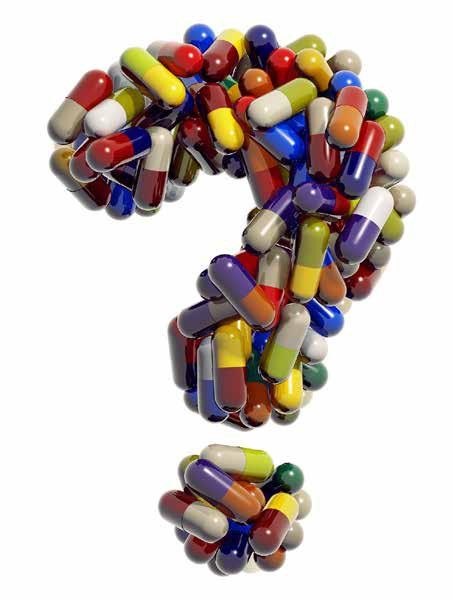 Are testosterone supplements truly effective? Sadly no. Many guys think they can just pop a few “natural enhancers” and their T levels will magically increase. If you’re eating garbage, not exercising, and not getting enough sleep, no amount of testosterone supplements is going to help your testosterone levels reach optimal levels.
Are testosterone supplements truly effective? Sadly no. Many guys think they can just pop a few “natural enhancers” and their T levels will magically increase. If you’re eating garbage, not exercising, and not getting enough sleep, no amount of testosterone supplements is going to help your testosterone levels reach optimal levels.
Does the FDA Approve or Test Testosterone Supplements?
No. Supplement manufacturers, and distributors, have no FDA testing or approval requirements. Since there is no testing, there is not the same type of oversight on medications that go through rigorous testing programs before it can be released to the public.
These rigorous testing programs also limit what pharmaceutical companies can and cannot say when marketing their products which oversight supplement companies do not have to worry about. When Hormone Therapeutics prescribes Testosterone and other hormones these products are created and tested in sterile laboratories and marketing regulations are very specific on what one can and cannot say as far as the efficacy of the product. A Supplement firm is only responsible for ensuring, ON THEIR OWN, that:
- The testosterone supplements are safe
- Claims are not false or misleading
- The supplement complies with FDA regulations
Essentially, they are allowed to police themselves and only under scrutiny if someone complains.
Testosterone Supplements We Believe In
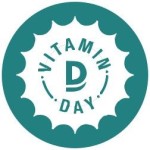 Vitamin D3
Vitamin D3
Vitamin D3 is actually a hormone and not a vitamin. Vitamin D3 provides a whole host of health benefits. We naturally make vitamin D from the sun, but only when we are outside. Studies are showing we getting sub deprived as Westerners spend more time inside. Sunscreen also inhibits vitamin D3 production which can hinder testosterone production. Studies have shown that men who take Vitamin D3 supplements see a boost in testosterone levels.
 Omega-3 Fish Oil
Omega-3 Fish Oil
Fish oil lower SHBG and increase LH (Luteinizing Hormone) production. LH is the key precursor hormone triggering the gonads to produce testosterone. It’s a good fat and great for the heart.
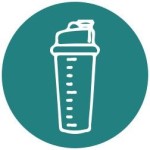 Whey Protein + Creatine shake
Whey Protein + Creatine shake
Whey protein in an unsweet coconut milk shake with a scoop of creatine is a good pre workout to fuel muscles and help them rebuild afterwards.
Testosterone Supplement We Deem Unnecessary
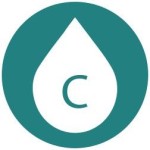 Vitamin C
Vitamin C
There are many internet ads touting Vitamin C’s benefits for “how to increase testosterone”. Most of us get enough Vitamin C from our diets and the only studies we found that showed Vitamin C increasing testosterone levels was in diabetic mice. So, if you are a diabetic mouse, up your Vitamin C.
Hormone Therapeutics aims to help people looking to improve and optimize their health through natural means or through the guidance of our physicians.
Don’t miss out our free weekly tips and news on Low T, hormone balancing, healthy living, nutrition and a lot more.
Want more?

Sign up today and Get our ebook, ‘Naturally Increase Your Testosterone Levels’ absolutely FREE.
Do Testosterone Supplements Work?
Saleamp Design October 25th, 2016
Posted In: Testosterone Therapy
Tags: creatine, FDA, fish oil, how to increase testosterone, Lutenizing hormone, Omega-3, SHBG, supplements, testosterone boosters, testosterone pill, testosterone supplements, vitamin c, vitamin D, whey protein
11 Testosterone Boosting Habits to Increase Testosterone and Live Longer
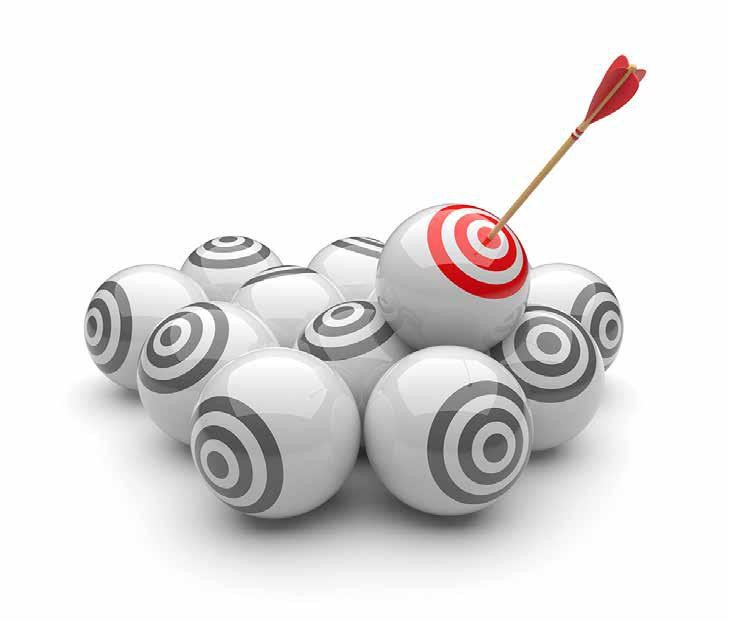 It’s been well-established that testosterone has many benefits, and in order to enhance the production of T, here are concrete testosterone boosting habits you can take today. Reap those rewards from optimized testosterone level right now.
It’s been well-established that testosterone has many benefits, and in order to enhance the production of T, here are concrete testosterone boosting habits you can take today. Reap those rewards from optimized testosterone level right now.
As you’ve seen, there are all sorts of ways to boost your testosterone levels over time. Supplements and dietary changes and exercises and a multitude of other healthy things to do. It can be a little overwhelming, though, so here’s a hit-list, with science to back them up.
Start these eight things right now, and your body and mind will thank you, profusely.
 Testosterone Boosting Habits #1: Eat!
Testosterone Boosting Habits #1: Eat!
There are loads of things you can eat to improve your health and testosterone levels, but one of the most efficient is dark chocolate. That’s good quality, low sugar, very dark chocolate, not something you picked up at the gas station. And not too much!
A Harvard University study showed that eating a regular-sized bar of dark chocolate about three times per month will do wonders for your blood. Chocolate is full of flavonoids which can reduce harmful clots and thin the blood, which is great for your blood pressure.
 Testosterone Boosting Habits #2: Love!
Testosterone Boosting Habits #2: Love!
In the physical sense. Have sex! Grab your significant other and have a great time! The University of California proved what we already knew. Orgasms reduce stress. Stress is bad for you.
The study actually showed that having sex regularly will extend your life by two years or more, and they’ll be pretty sweet years. Sexual desire and testosterone go hand-in-hand, and increasing one will increase the other. It works both ways, and of course it’s fun!
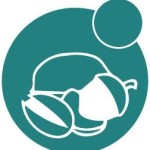 Testosterone Boosting Habits #3: Go Nuts!
Testosterone Boosting Habits #3: Go Nuts!
Nuts are full of healthy fats, and snacking on them in moderation will boost your testosterone, heart health, and all sorts of other things. Monounsaturated fats such as those found in nuts make your heart safer by lowering your cholesterol.
A project undertaken at Loma Linda University in California concluded that we should eat nuts five days a week in order to extend our lives by about three years. Moderation is essential, of course, since nuts are extremely calorie-dense. Just a handful will do.
 Testosterone Boosting Habits #4: Drink! (Some)
Testosterone Boosting Habits #4: Drink! (Some)
Studies performed by Dutch researchers have shown that wine in moderation is very, very healthy. The science tends to go back and forth on this, but red wine especially is rich in antioxidants, resveratrol and polyphenolic compounds. Antioxidants are just super for reducing the effects of age, and the polyphenolic compounds prevent fatty tissues from blocking your arteries.
If you’re not quite sure which wine to drink, Cabernet Sauvignon is richest in antioxidants. Stick to red wine for the health benefits, and don’t have too much. The Dutch study says a half a glass of wine a day is enough. Drinking more than that is more for your mind than your body, and binging on a whole bottle is never a good idea.
 Testosterone Boosting Habits #5: Play!
Testosterone Boosting Habits #5: Play!
Sports are good for you. Walking, running, and jumping are great exercise, and the competitiveness is an excellent testosterone booster. As the saying goes, the best exercise is one you’ll actually do, and making it fun by playing around with your friends (or defeating your bitter enemies) is something you’ll be glad to stick with.
A Swedish research study found that regular golfers live up to five years longer on average. The game is surprisingly competitive, and players walk several miles during an 18-hole round. It’s good for your heart, for your muscles, and for your mind.
 Testosterone Boosting Habits #6: Eat Some More!
Testosterone Boosting Habits #6: Eat Some More!
A diet filled with fish, olive oil and garlic can help your blood pressure, cholesterol, and lifespan. It’s what’s commonly referred to as the Mediterranean diet, and the science shows it works. It was another Dutch research program that proved it, and they’re not even Italian! They’ve got no horse in this race!
These foods are all rich in aminos, healthy fats, and cholesterol-busting components that will keep your ticker ticking. And they’re delicious! So throw that fish in a pan and pile on the garlic, it’s all good for you.
There are plenty of other foods that will help your testosterone levels and general health, of course. Refer to our other articles for the full list of testosterone-boosting and healthy foods.
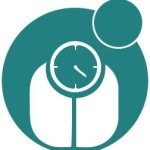 Testosterone Boosting Habits #7: Lose!
Testosterone Boosting Habits #7: Lose!
Yes, lose weight, it’s another reason to drop those extra pounds.
What’s more, a study at Oxford University found that a BMI of over 30 at the age of 40 can reduce your life expectancy by as much as seven years. So hit the gym and cut the calories! It’s worth it.
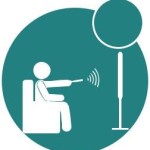 Testosterone Boosting Habits #8: Win!
Testosterone Boosting Habits #8: Win!
Testosterone production starts in the brain, in a very literal sense. High emotions and a competitive spirit can trigger a testosterone and adrenaline boost as your body works to support your success.
So indulge the urge! Play to win in everything you do. Sports are one way, as is striving for success in the workplace and in your hobbies. Even just watching sports and rooting for your favorite team can cause increased testosterone levels. The more excited you get about it, the better for your testosterone. So feel free to bust out the face paint and even that giant foam finger!
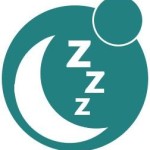 Testosterone Boosting Habits #9: Sleep!
Testosterone Boosting Habits #9: Sleep!
Get your solid eight hours. You need it. Even minor sleep deprivation causes a cascade of health problems that include a tendency to binge eat and a lowered metabolism. Your sex drive will go down, too, and of course your general energy level and mental focus.
All of that leads to lowered testosterone production, and the numbers are shocking. The Journal of the American Medical Association published a study showing that men who sleep less than 5 hours per night quickly sure a 15% drop in testosterone. The normal drop that occurs with age is 1% per year, so this is a big problem.
Bottom line: Prioritize sleep. Make the time!
 Testosterone Boosting Habits #10: Laugh!
Testosterone Boosting Habits #10: Laugh!
It really is the best medicine! Your mental state affects your entire body, and multiple studies have shown that stress is bad in more ways than we ever imagined.
So laugh! Have a good time! Studies performed in the US and elsewhere conclude that laughing for about 15 minutes per day can increase your lifespan by as much as eight years. It’ll make you a happier person, and it’s becoming more and more clear that a happier person is a healthier person.
So there are ten things you can start doing today to improve your health, your mood, and your testosterone levels. Those three things go hand-in-hand for men, and you’ll find that good healthy practices just make life better.
We strongly recommend going to the doctor for your annual physical, and be sure to have your testosterone levels checked. But there’s so much you can do at home to help make sure those lab results are full of good news.
 Testosterone Boosting Habits #11: Contact Hormone Therapeutics!
Testosterone Boosting Habits #11: Contact Hormone Therapeutics!
Most of us have tried to eat better, work out and live naturally. How long have you tried this and why do you expect that you can realize your New Year’s resolutions this year that you haven’t the last 7 years? Contact expert specialist physicians for a Free Evaluation and learn how a physician guided program can change your life to the way you remember.
Hormone Therapeutics aims to help people looking to improve and optimize their health through natural means or through the guidance of our physicians.
Don’t miss out our free weekly tips and news on Low T, hormone balancing, healthy living, nutrition and a lot more.
Want more?

Sign up today and Get our ebook, ‘Naturally Increase Your Testosterone Levels’ absolutely FREE.
11 Testosterone Boosting Habits to Increase Testosterone and Live Longer
Saleamp Design October 21st, 2016
Posted In: Uncategorized
Tags: antioxidants, boost testosterone, chocolate, cholesterol, dark chocolate, eat, exercise, fish, flavonoids, garlic, increase testosterone, lose weight, Monounsaturated fats, natural, naturally increase testosterone, nuts, olive oil, orgasm, polyphenolic compounds, red wine, rest, resveratrol, sex, sleep, stress, sugar, testosterone booster, testosterone boosting habits


 Herbal Testosterone Booster #1: Malaysian Ginseng (Eurycoma Longifolia)
Herbal Testosterone Booster #1: Malaysian Ginseng (Eurycoma Longifolia)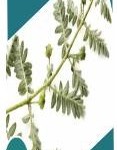 Herbal Testosterone Booster #2: Puncturevine (Tribulus Terrestris)
Herbal Testosterone Booster #2: Puncturevine (Tribulus Terrestris)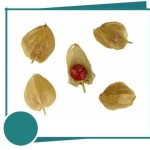 Herbal Testosterone Booster #3: Ashwagandha (Withania Somnifera)
Herbal Testosterone Booster #3: Ashwagandha (Withania Somnifera)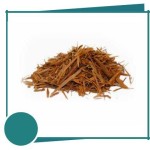 Herbal Testosterone Booster #4: Yohimbe (Pausinystalia Yohimbe)
Herbal Testosterone Booster #4: Yohimbe (Pausinystalia Yohimbe)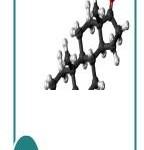 Herbal Testosterone Booster #5: DHEA (Dehydroepiandrosterone)
Herbal Testosterone Booster #5: DHEA (Dehydroepiandrosterone)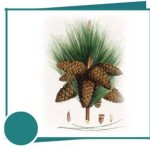 Herbal Testosterone Booster #6: Pine Bark Extract (Pinus Pinaster)
Herbal Testosterone Booster #6: Pine Bark Extract (Pinus Pinaster)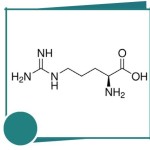 Herbal Testosterone Booster #7: Arginine (L-arginine)
Herbal Testosterone Booster #7: Arginine (L-arginine)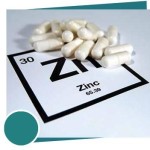 Herbal Testosterone Booster #8: Zinc
Herbal Testosterone Booster #8: Zinc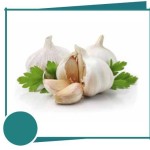 Herbal Testosterone Booster #9: Garlic (Allium sativum)
Herbal Testosterone Booster #9: Garlic (Allium sativum) Herbal Testosterone Booster #10: Korean Red Ginseng (Panax ginseng)
Herbal Testosterone Booster #10: Korean Red Ginseng (Panax ginseng) Herbal Testosterone Booster #11: Chrysin (Passiflora incarnate)
Herbal Testosterone Booster #11: Chrysin (Passiflora incarnate)